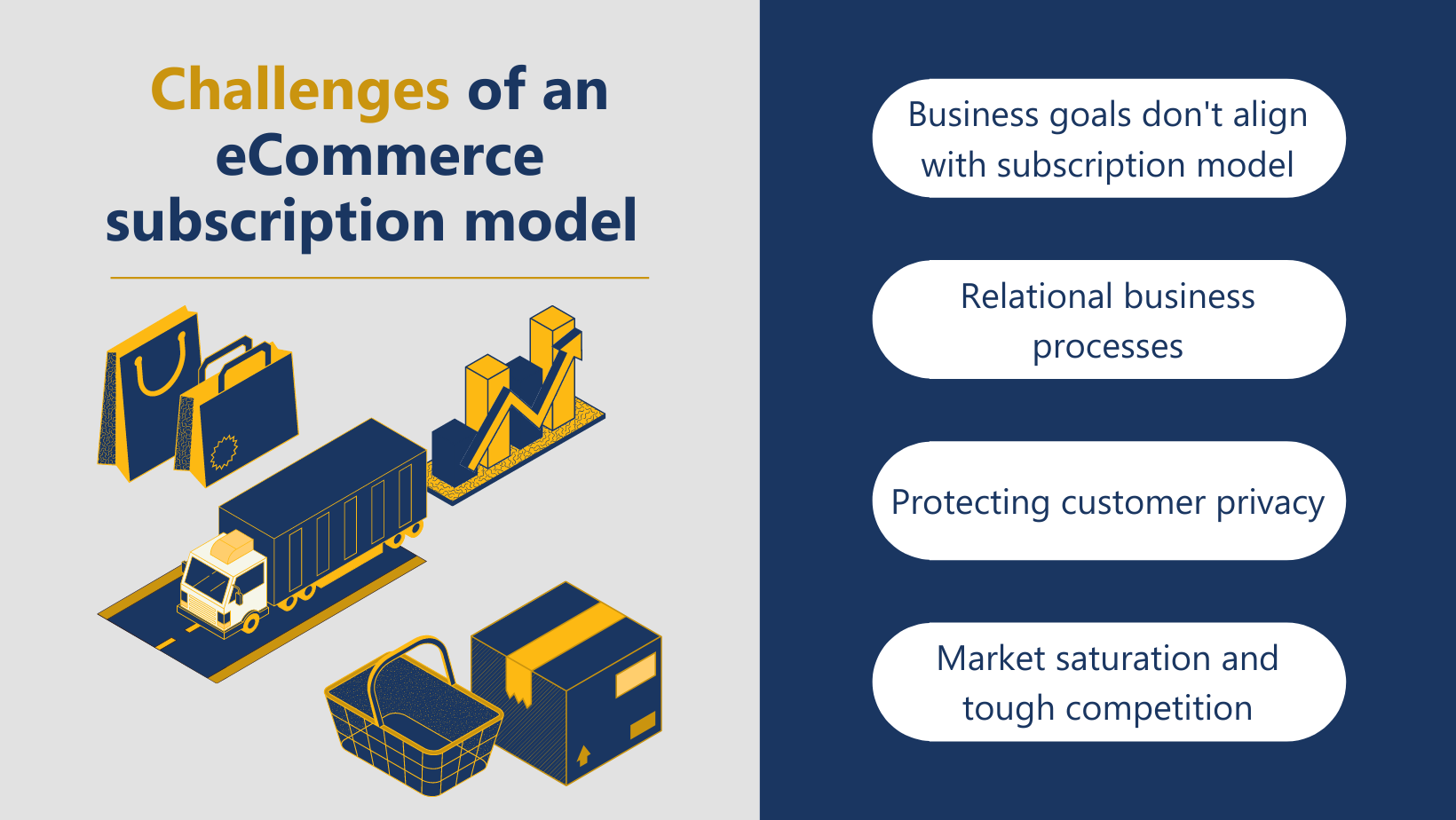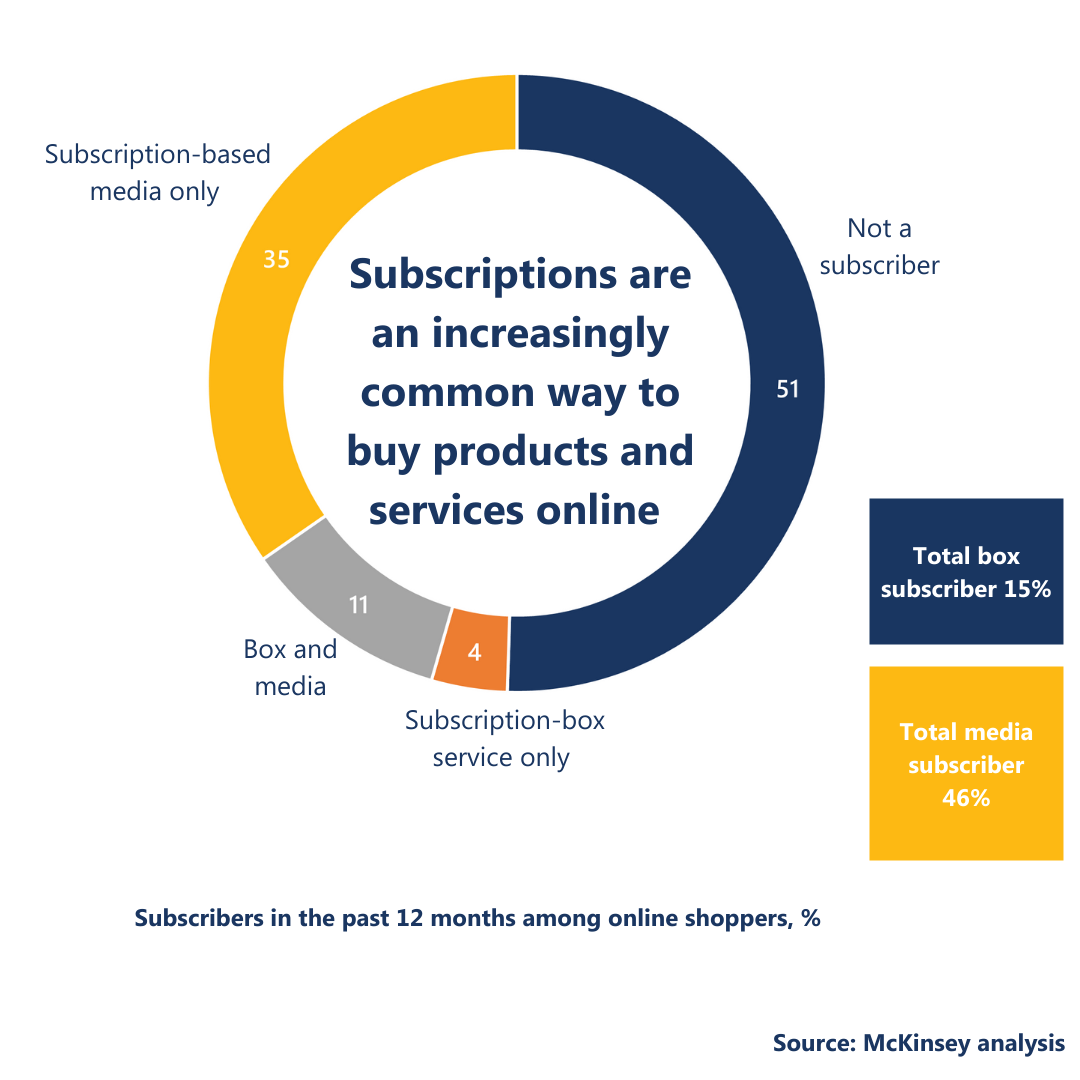As international demand for e-commerce continues to increase, retailers are adopting subscription services. The Subscription Commerce Conversion Index found that retail subscriptions in the U.S. amount to $15 billion per month, and a recent study by Juniper Research found that by 2025 there will be nearly two billion active video subscriptions globally—a 65% increase from the end of 2020.
Modern shoppers want flexible options, and subscriptions afford them convenience, lower prices, and often exciting surprises depending on the type of subscription. The best part is that it’s not only the subscribers that benefit from this model; armed with a solid retention strategy and magnetic marketing, companies can gain higher customer lifetime value (LTV) and greater return on customer acquisition costs (CAC).
Nevertheless, subscription-based e-commerce is not the right strategy for every company. Retailers who lack the resources to deliver on customer expectations are quickly being left behind. This blog covers four of the main challenges of managing an e-commerce subscription model, so you can make an informed decision as to whether it would be an ideal strategy for your company.
Challenges of an e-commerce subscription model

Unfortunately, not everyone gets subscription billing right. Below are four of the most common challenges to avoid when managing a recurring payment strategy.
Business goals don’t align with subscription model
Not all subscription models are built to suit your products or services. Too many brands hop on the bandwagon without conducting a thorough evaluation of their business goals. Pressure to keep up with competitors may sometimes push retailers to adopt subscription billing without due diligence. For example, hastily implementing a free trial period may seem like a strategic move, but you must first consider the phenomenon of customers who sign up for a free trial or subscribe for a short period before unsubscribing.
How will you manage the churn rate if your offer isn’t suitably sticky? Before adopting any pricing model, you should figure out if it works for your offer. When it comes to free trials, if you’re selling products that are ‘built to last’ or are associated with special occasions, you may find that the cons far outweigh the pros because you can’t rely on new customers to regularly consume your product over time.
Adopting relational business processes
Transactional business practices are the most efficient for traditional companies—your focus is attracting customers, securing the sale, and then moving on to the next customer. However, this tactic won’t work for subscription e-commerce. You’ll need to implement relational business practices to retain subscribers by forming a bond and sense of community through your products.
Subscribers are more loyal to strong brands whose offerings align with their values. Does your company have the resources to sustain a high emphasis on customer service, commitment and quality? If the answer is no, it’s doubtful that your subscription will be a success, and you’ll experience a higher churn rate as a result.

Upgrades to cybersecurity to protect customer privacy
Companies that offer subscription services often analyze and store vast amounts of customer data. Everything from personally identifiable information (PII) to behavioural data to psychographics can be tracked and applied to provide a smoother, more personalized shopping experience; however, great reward comes great risk. Companies are responsible for protecting data from security leaks and cyber-attacks. This means not only meeting data privacy requirements, but also cybersecurity requirements.
Depending on the region(s) your business operates in, you could be responsible for complying with multiple data protection laws. The General Data Protection Regulation (GDPR) covers data protection and privacy in the European Union and the European Economic Area. At its most severe, infringements could result in a fine of up to €20 million, or 4% of the firm’s worldwide annual revenue from the preceding financial year, whichever amount is higher.
Market saturation and tough pricing competition
You won’t be the only company with a subscription e-commerce model; the competition is tough and growing more exclusive by the day. The keys to standing out in a saturated market are differentiation and diversification. What makes your offer unique? What can you offer that your competitors cannot?
Many companies implement a penetration pricing strategy to get their foot in the door and undercut the competition; although, managing this strategy can be tricky as you will still need to secure enough revenue to be viable and avoid accidentally teaching subscribers that your offer is a lower value. Embracing agility can help your company formulate the right recipe for effective market segmentation.

Introducing Subscription Billing Suite
Without the proper infrastructure in place to support your growth journey, your company will likely be overwhelmed and unable to scale appropriately. A successful subscription-based e-commerce business model relies on handling large volumes of data, quick pivots in complex pricing strategies, and data-driven forecasting. Many brands determine that they require financial transformation. A robust subscription management solution, like Subscription Billing Suite, can not only manage recurring billing, invoicing, and recognition challenges, but also supports flexible pricing structures, real-time reporting, and regulatory compliance. It’s available as an embedded extension in Microsoft Dynamics 365 Finance and Operations, Business Central, and GP.

